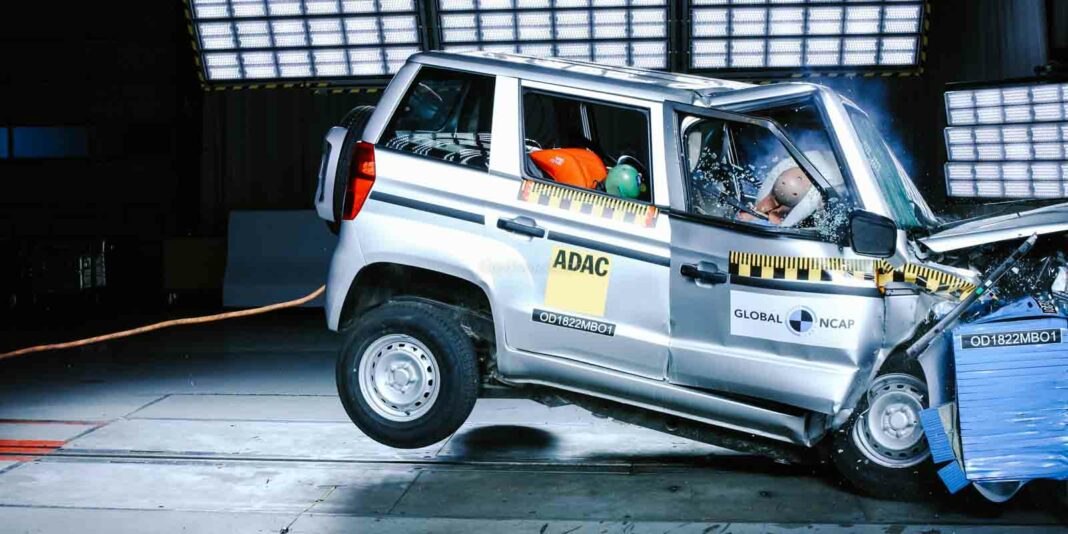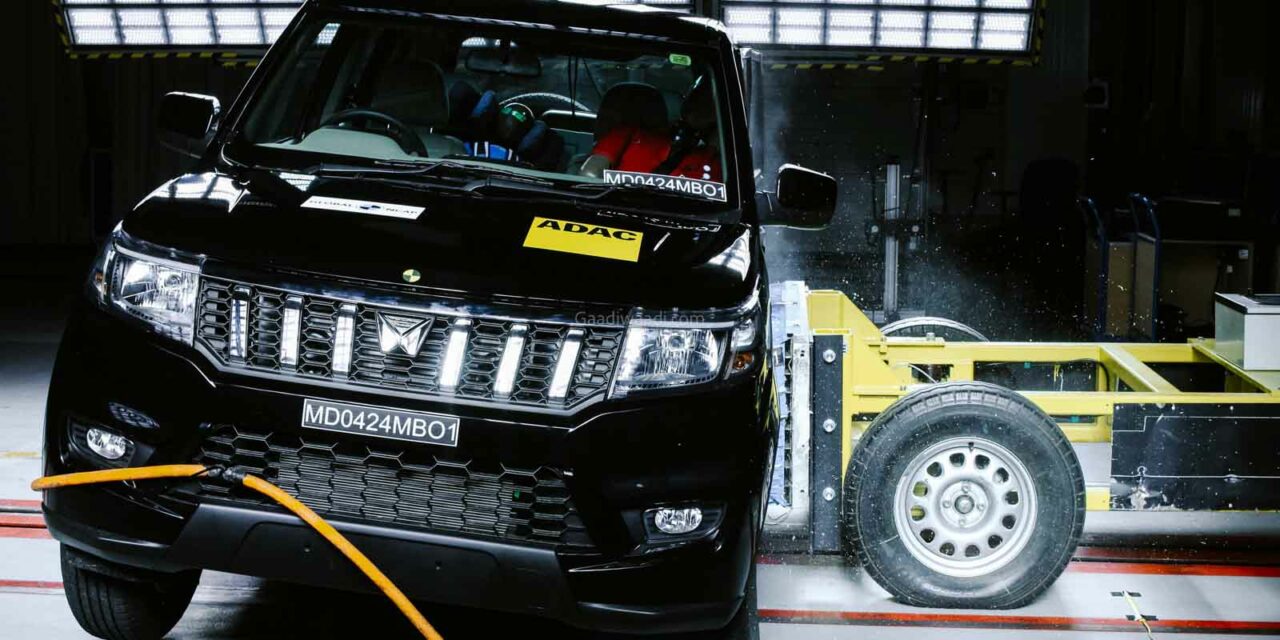
Mahindra Bolero Neo has achieved one star in adult occupant and one star in child occupant protection in the latest GNCAP round of crash tests
The Mahindra Bolero Neo was subjected to testing in line with Global NCAP’s updated guidelines, where it exhibited inadequate safety performance in terms of adult occupant protection during frontal crashes. The results indicated that the vehicle’s structure was unstable, the footwell area was compromised, the driver’s chest protection was inadequate, and the protection for the feet was insufficient.
Additionally, the protection levels between front impact and side impact collisions were significantly different, pointing to an inconsistency in safety measures. Moreover, the Bolero Neo does not offer side head protection, and there is no option to add it, indicating a lack of compliance with Global NCAP’s side protection standards.
It also fails to meet the seatbelt reminder (SBR) requirements set by Global NCAP. Although child occupant safety performed reasonably well in crash tests, there were concerns due to the lack of 3-point seat belts for every seating position, no option to disconnect the passenger airbag, and limitations on the Child Restraint System (CRS) installation, with only one CRS being installable.

The testing results showed that most CRS systems installed in the Bolero Neo did not perform to expected standards, raising concerns about child safety. A critical safety issue is the inclusion of side-facing seating benches, which pose a significant risk to all passengers during crashes. Mahindra’s continued use of this seating design in the Bolero Neo demonstrates a failure to align with Global NCAP’s rigorous safety guidelines.
In the crash tests, the child seat designed for a 3-year-old was installed in a forward-facing position using the adult seatbelt and a support leg. This setup effectively prevented head exposure during the frontal impact, providing almost complete protection. On the other hand, the child seat for the 18-month-old was installed rearward-facing using the seatbelt but failed to prevent head exposure during the frontal impact, resulting in limited protection.
The universal installation of the Q1.5 Child Restraint System (CRS) was not implemented, resulting in non-compliance with Global NCAP’s standards and consequently failing to accrue any dynamic points for this specific position. Despite the commendable performance of both child seats in side impact tests, the vehicle exhibits numerous safety deficiencies, notably the absence of standard 3-point seat belts in all seating positions across all variants.
Moreover, the vehicle lacks conspicuous markings or warnings for rearward-facing CRS in the front passenger seat, potentially leading to unsafe installations. Additionally, the absence of an option to deactivate the passenger airbag when a rearward-facing CRS is placed in the front passenger seat poses a significant safety hazard.
The CRS installation encountered challenges in multiple positions, indicating underlying issues with the overall design and compatibility with diverse child seats. These factors culminated in the vehicle receiving a mere 1-star rating for child occupant protection. The inadequate safety provisions for child passengers, coupled with installation complexities and subpar seatbelt systems, underscore the critical safety issues associated with the Mahindra Bolero Neo concerning child occupants.
